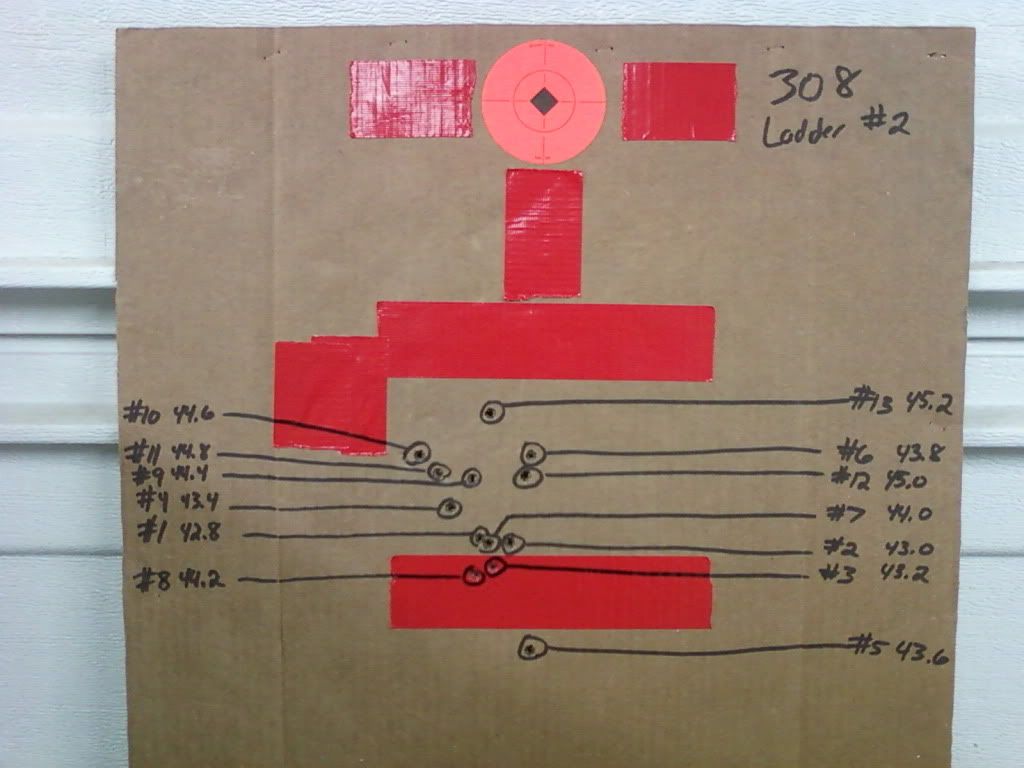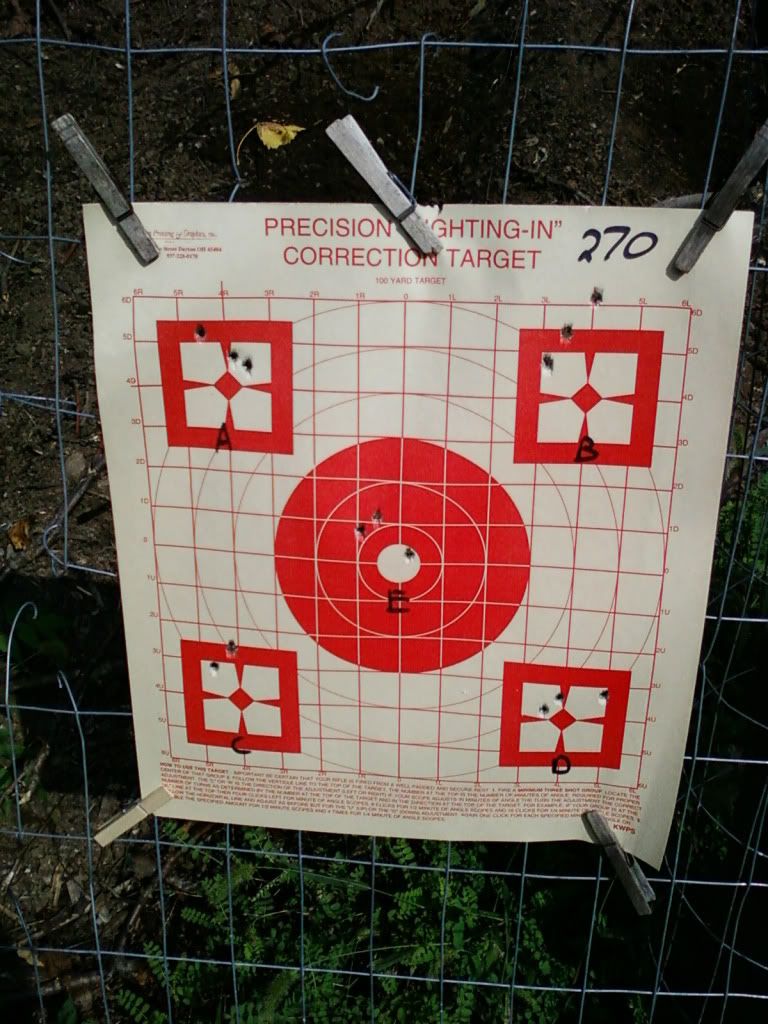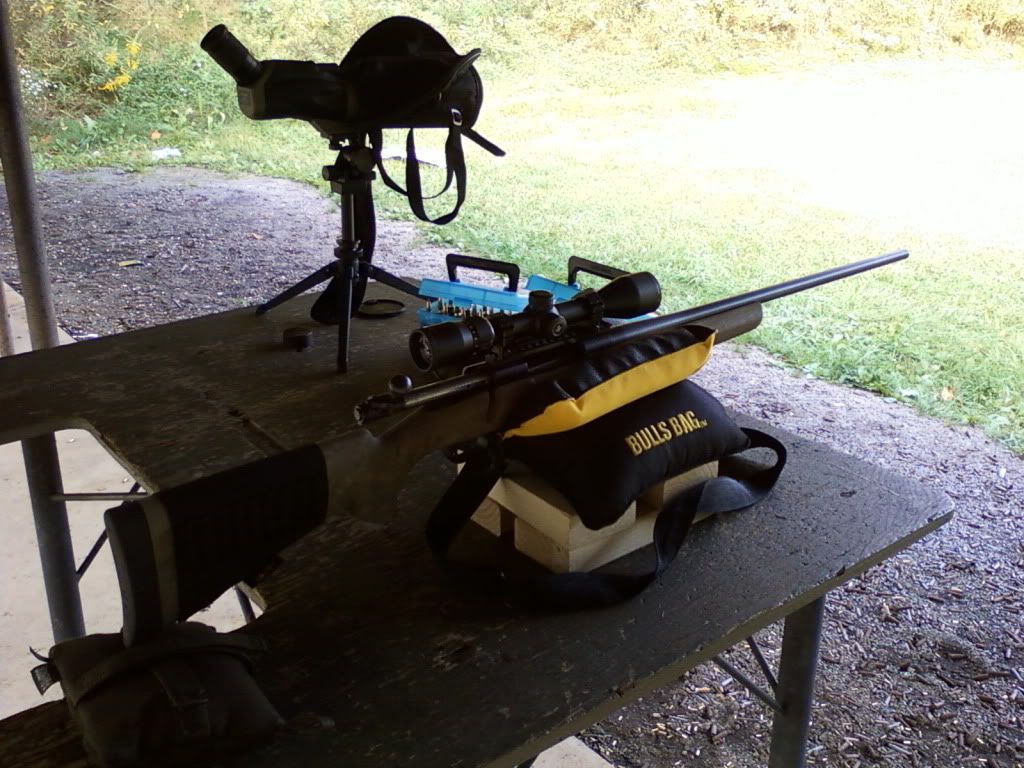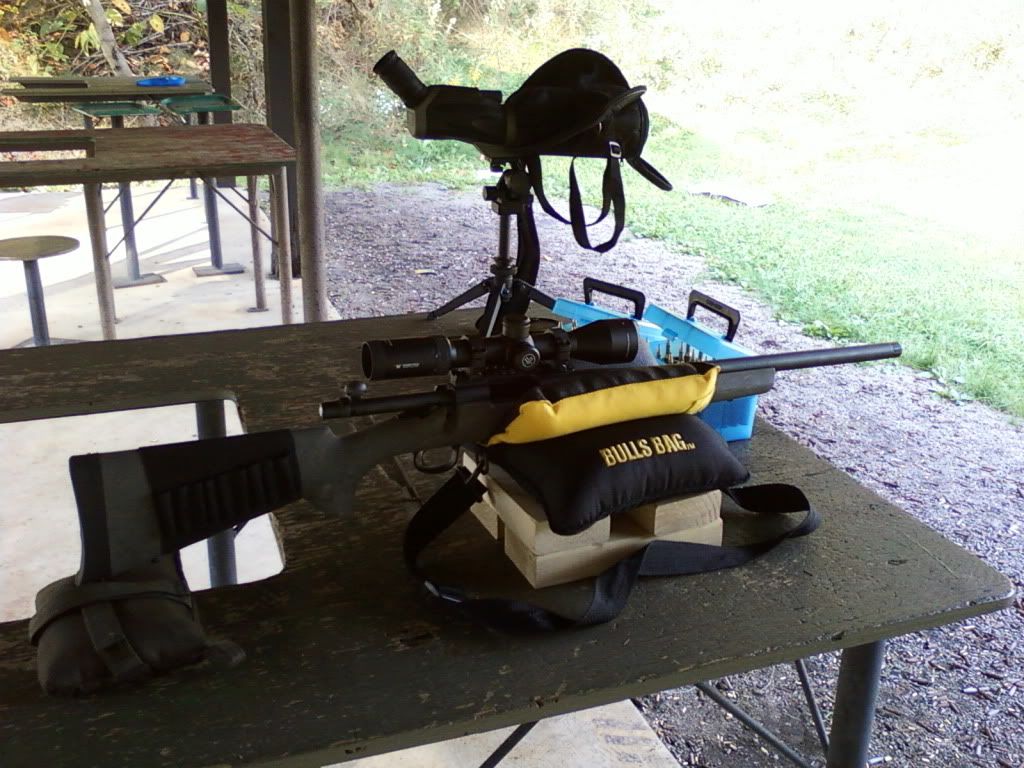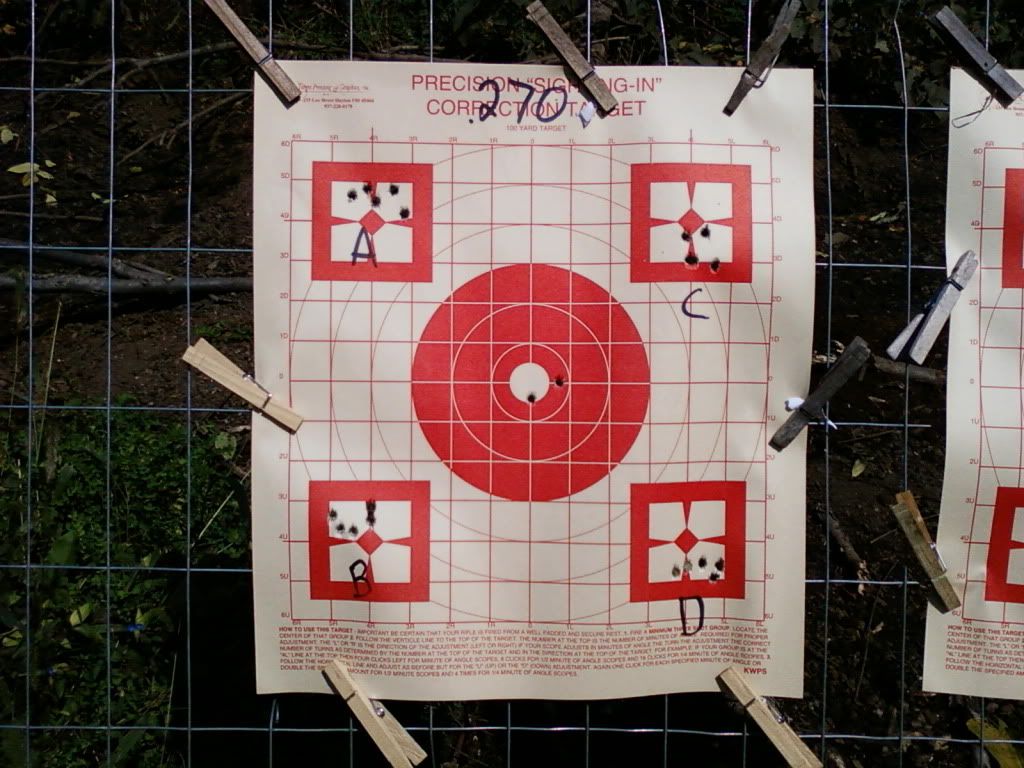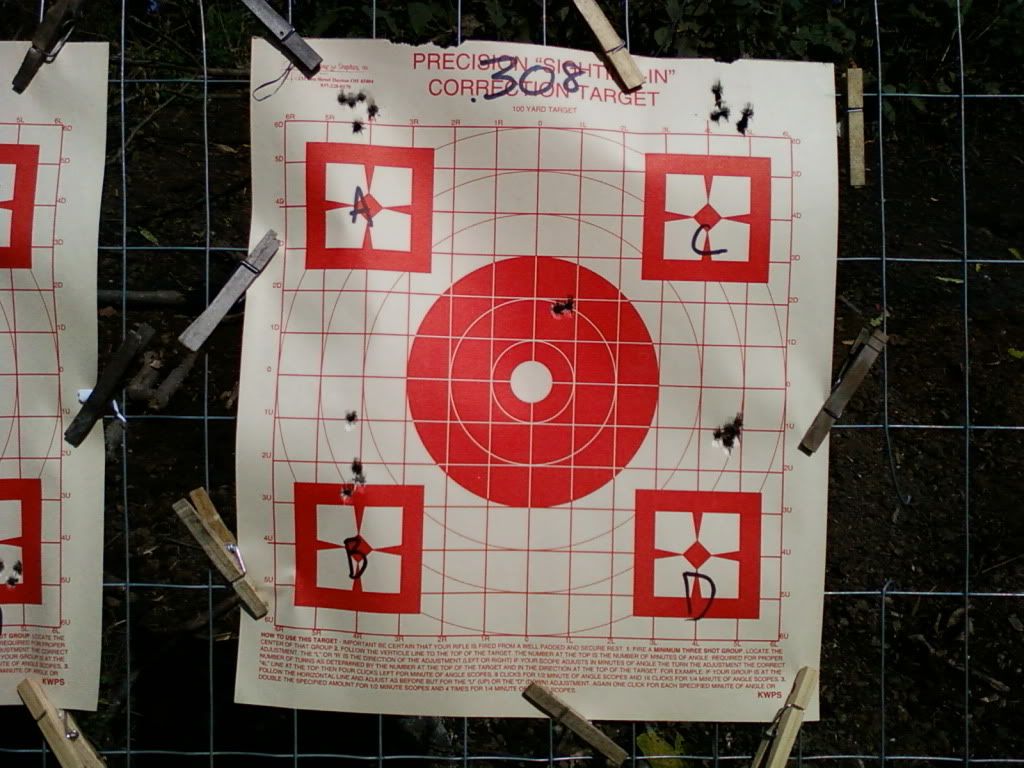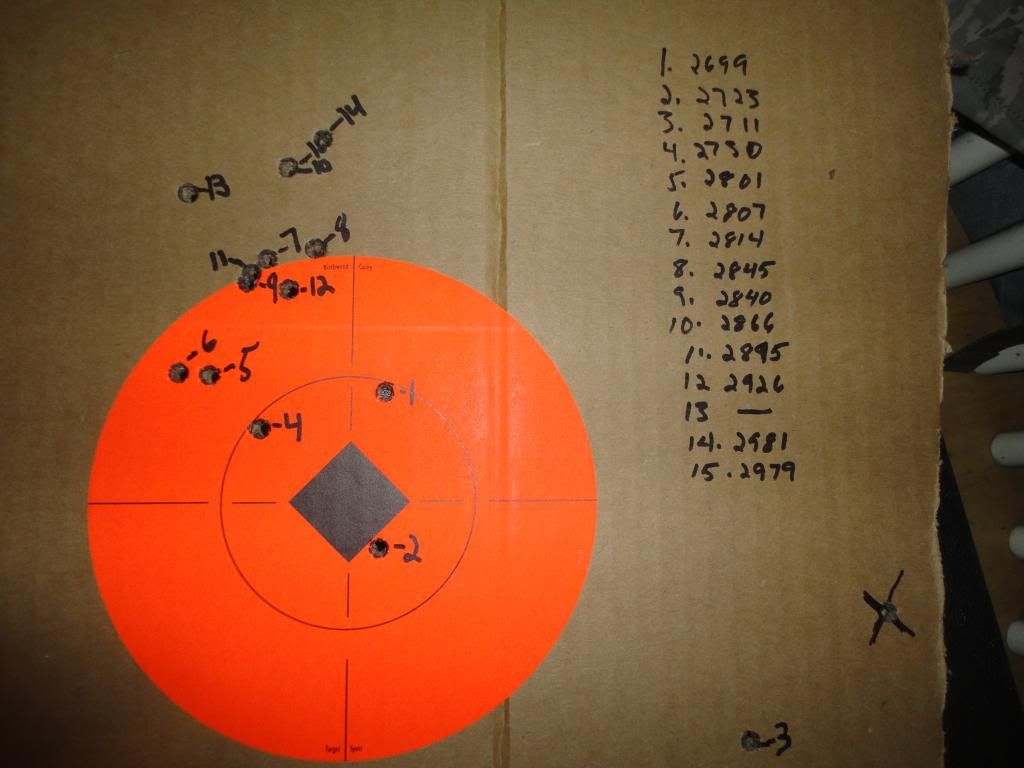Hi everyone. I have been a lurker here for a few years, soaking up all the info my brain can handle over that time. I have learned a ton of useful info and am trying to put it to good use. I just started reloading for my rifles, and thought I would try a ladder test on two of them.
I have a Post-64 Winchester Mod 70, in .270 Win, mounted in a Hogue full bed block ghillie tan stock, with an EGW 20 moa rail, TPS Low 1 inch rings, with a Vortex Diamondback 4-12x40 BDC scope.
My other rifle is a Remington 700 AAC-SD, factory Hogue stock, EGW 20 moa rail, TPS super low 30mm rings, with a Vortex Viper HS 2.5-10x44 scope.
The Winchester shoots slightly under moa with factory ammo, and I have had a consistent copper fouling issue with it. Within a few shots, the bore is completely covered in copper all the way out to the muzzle. I have done the JB bore bright treatment, and just recently the Tubbs Final Finish system. The copper fouling still occurs, but cleaning it is MUCH easier since I have done all of those treatments.
I am most impressed with the Rem 700, as with FGMM 168 and Hornady 168 AMAX factory loaded ammo, it is a consistent .5-.6 moa rifle with those loads. Even with the Hogue stock. I use a Bulls Bag rest, and a rear bag to adjust elev. I pull the Bulls Bag all the way back to just in front of the trigger guard, so there is very little of the rifle weight sitting on the end out near the sling swivel, where a bipod would be mounted.
Today, I shot a ladder test with both rifles and was curious if anyone could help decode the results with me, since I am totally new to reloading. Both of these rifles are primarily hunting rifles.
For the Win, I was using Winchester brass, IMR 4350, Hornady 130 gr SST, and Federal 210 primers. Cases were full length sized, trimmed, chamfered, deburred, primer pocket uniformed, and thoroughly cleaned. My ladder went from 49.0 to 55.0 gr in 0.5 increments.
For the Rem, I was using Hornady brass, Varget, Nosler 168 gr BT, and Federal 210 primers. Cases were full length sized, trimmed, chamfered, deburred, primer pocket uniformed, and thoroughly cleaned. My ladder went from 39.0 to 45.0 gr in 0.5 increments.
I was shooting at 300 yards, since that is the longest range my club is configured for. Both my rifles are zeroed at 200 yards, so for this test, I didn't do any adjustment for elevation. I used the orange dot shown in the pics for the POA and let them fall where they may.
First are the Win 70 results...
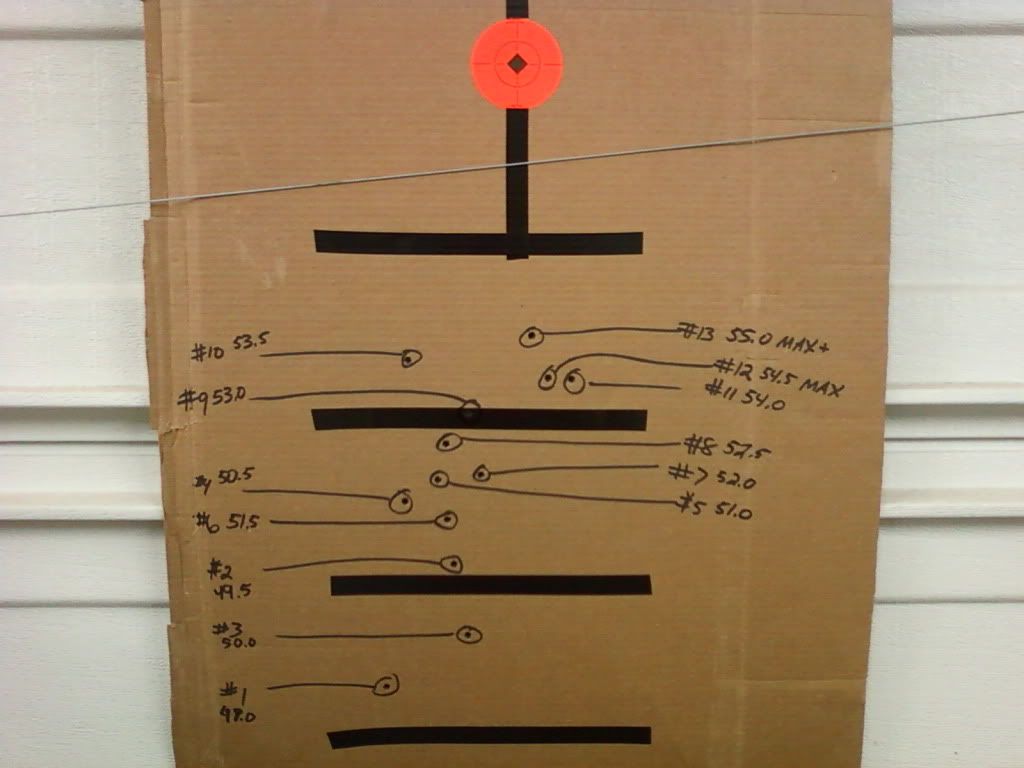
Next are the Rem 700 results...
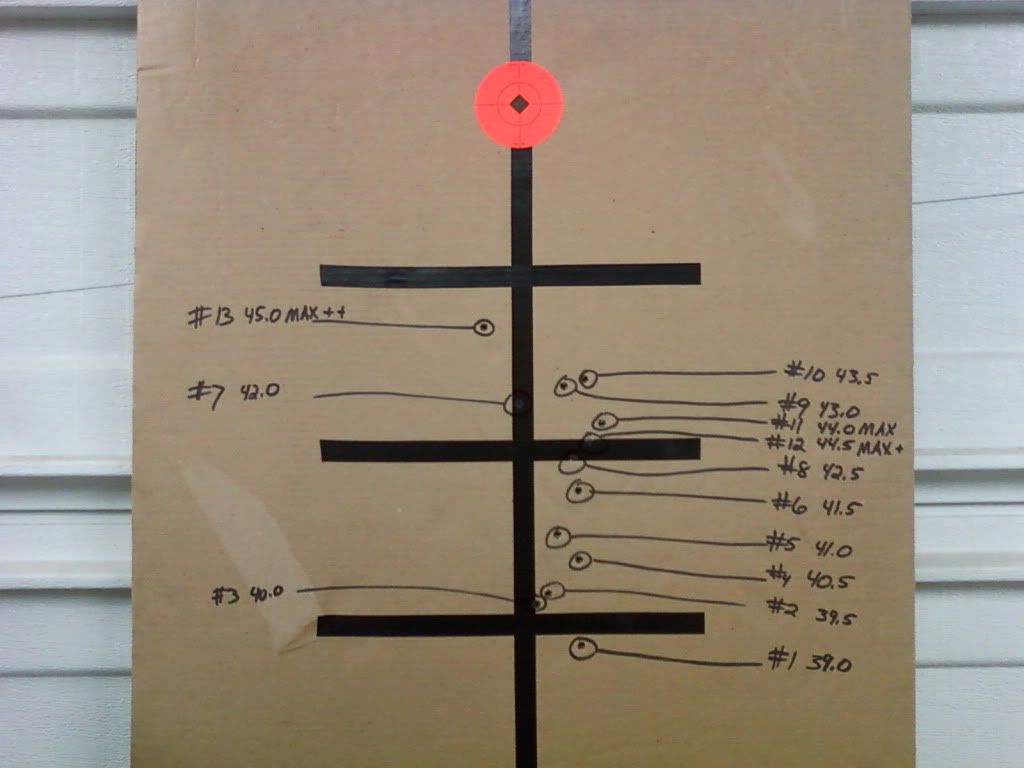
For the Win 70, I am thinking I have a node around 54.0-54.5 gr.
For the Rem 700, I am also thinking I have a node around 43.0-43.5 gr.
I would appreciate any and all thoughts and comments.
Thanks,
Steve B
I have a Post-64 Winchester Mod 70, in .270 Win, mounted in a Hogue full bed block ghillie tan stock, with an EGW 20 moa rail, TPS Low 1 inch rings, with a Vortex Diamondback 4-12x40 BDC scope.
My other rifle is a Remington 700 AAC-SD, factory Hogue stock, EGW 20 moa rail, TPS super low 30mm rings, with a Vortex Viper HS 2.5-10x44 scope.
The Winchester shoots slightly under moa with factory ammo, and I have had a consistent copper fouling issue with it. Within a few shots, the bore is completely covered in copper all the way out to the muzzle. I have done the JB bore bright treatment, and just recently the Tubbs Final Finish system. The copper fouling still occurs, but cleaning it is MUCH easier since I have done all of those treatments.
I am most impressed with the Rem 700, as with FGMM 168 and Hornady 168 AMAX factory loaded ammo, it is a consistent .5-.6 moa rifle with those loads. Even with the Hogue stock. I use a Bulls Bag rest, and a rear bag to adjust elev. I pull the Bulls Bag all the way back to just in front of the trigger guard, so there is very little of the rifle weight sitting on the end out near the sling swivel, where a bipod would be mounted.
Today, I shot a ladder test with both rifles and was curious if anyone could help decode the results with me, since I am totally new to reloading. Both of these rifles are primarily hunting rifles.
For the Win, I was using Winchester brass, IMR 4350, Hornady 130 gr SST, and Federal 210 primers. Cases were full length sized, trimmed, chamfered, deburred, primer pocket uniformed, and thoroughly cleaned. My ladder went from 49.0 to 55.0 gr in 0.5 increments.
For the Rem, I was using Hornady brass, Varget, Nosler 168 gr BT, and Federal 210 primers. Cases were full length sized, trimmed, chamfered, deburred, primer pocket uniformed, and thoroughly cleaned. My ladder went from 39.0 to 45.0 gr in 0.5 increments.
I was shooting at 300 yards, since that is the longest range my club is configured for. Both my rifles are zeroed at 200 yards, so for this test, I didn't do any adjustment for elevation. I used the orange dot shown in the pics for the POA and let them fall where they may.
First are the Win 70 results...

Next are the Rem 700 results...

For the Win 70, I am thinking I have a node around 54.0-54.5 gr.
For the Rem 700, I am also thinking I have a node around 43.0-43.5 gr.
I would appreciate any and all thoughts and comments.
Thanks,
Steve B


